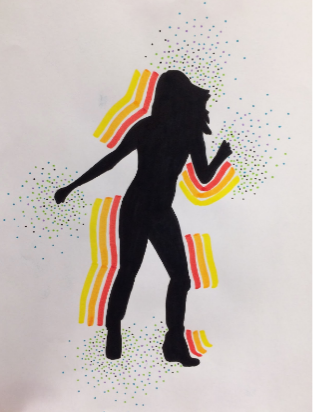We all know it – this is a tough time of year. The end of the quarter, new second semester classes, and winter on top of it all. But a new form of exercise which has recently increased in popularity can serve to alleviate the effects of these stressors. It’s fun, liberating, and easy to access: dance meditation.
Just putting on a favorite song and letting loose unleashes tension and improves mood; it’s its own form of meditation. Add a bit more structure to it, and that’s dance meditation. It has been shown to release a tremendous amount of tension; its intent is to liberate feelings of joy and positivity, expand the mind, and allow one to celebrate himself or herself. A general session of dance meditation begins with roughly forty minutes of dancing, followed by twenty minutes of stillness, and concludes with another five minutes of dance. The process floats from the idea that tension is trapped energy, and that the wild movement of dance is a fantastic way to set this energy free. Then, when lying still immediately after the dancing portion, the body’s pause allows the released energy to travel inwards to the more delicate layers of being.
Dance meditation has roots in the mysticism of Sufism. Historically, Sufis have enjoyed it as a tradition and a celebration of life. Today, they continue to consider active meditation a step towards the source of all perfection. Sufis claim that by listening to music, focusing on God, and spinning in repetitive circles (which is a symbolic imitation of the planets’ orbit of the sun), they abandon personal desires and egos.
In fact, research shows that humans are born to dance. According to scientists, babies find the rhythm of music more engaging than speech. Furthermore, their ability to match beat improves when they are happy and smiling. Though primarily acoustic or “mildly enhanced,” these beats range from world music to classical to folk songs, all without lyrics. The instrumental core allows for deeper levels of concentration within oneself; this way, the mind sways the music as opposed to lyrics moving the emotions.
Because dance meditation uses rhythm, attentiveness, and an intuitive state, it provides a proper avenue for organization and control of the mind. Many find rapid stress relief in chatting or fidgeting, which often has the exact opposite effect. Transforming that crave for unproductive movement into a constructed and mindful exercise has countless benefits. And don’t feel obliged to save the experience for your vacation to a remote island; dance meditation can be performed wherever, whenever. Meditation means different things to different people, but its effects are all that matter. Thus, dance meditation’s purpose is similar to that of any other form of meditation: setting tension loose and harnessing inner peace to strengthen focus and psychological awareness.
So, if you’re having a rough day, don’t be afraid to turn to your tunes. Dance meditation teaches you to transform the turbulence in your life into a positive energy-generator. If dance really is the international language of the soul, perhaps it is the one thing that, quite literally, moves all of us.
Anika Tsapatsaris
staff writer
Graphics: Anika Tsapatsaris

